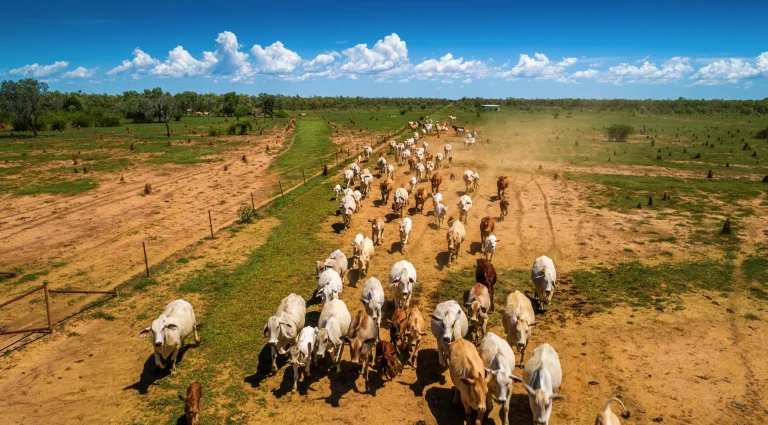Key Factors Influencing Agricultural Land Value Projections for 2025
Understanding the factors influencing agricultural land value projections for 2025 has become increasingly important for investors, farmers, and agricultural stakeholders seeking to make informed decisions in the rural property market. As we approach this pivotal year, numerous variables continue to shape the valuation landscape for farmland and rural properties across Australia and internationally.
The agricultural sector faces unprecedented challenges and opportunities that directly impact land values. From climate variability to technological advancement, from regulatory changes to global market dynamics, these elements collectively determine how agricultural properties will be valued in the coming year. At Agribusiness Horizons, we help clients navigate these complex factors through our comprehensive valuation and market analysis services, ensuring they understand the full picture when making critical investment decisions about agricultural land.
This analysis examines the primary drivers behind agricultural land valuations, providing insights into market trends, economic influences, and strategic considerations that will shape property values throughout the year ahead.
Economic Foundations Shaping Agricultural Property Values
The economic environment forms the bedrock for all agricultural land valuations, with interest rates, inflation, and capital availability playing crucial roles in determining property values. Central bank policies directly influence borrowing costs for agricultural purchases, affecting both the pool of qualified buyers and the prices they can afford to pay for rural properties.
Currency fluctuations add another layer of complexity to agricultural land values, particularly for properties that support export-oriented farming operations. When the Australian dollar strengthens against major trading currencies, it can reduce the competitiveness of agricultural exports, potentially dampening land values in regions heavily dependent on international markets.
Government fiscal policies, including taxation structures and agricultural subsidies, create additional economic pressures that influence property valuations. Changes to capital gains tax treatment, depreciation allowances, and rural land tax rates can significantly impact the net returns from agricultural property ownership, directly affecting what investors are willing to pay for these assets.
The availability of agricultural credit and lending conditions also shapes market dynamics. When financial institutions tighten lending criteria or adjust loan-to-value ratios for rural properties, it can constrain buyer demand and place downward pressure on land values, regardless of the underlying agricultural productivity of the property.
Climate and Environmental Considerations
Climate patterns and environmental factors represent some of the most significant influences on agricultural land value projections, with rainfall patterns, temperature variations, and extreme weather events directly impacting property productivity and long-term viability. Properties with reliable water access and climate resilience command premium valuations compared to those in more vulnerable locations.
Soil quality and land capability assessments have become increasingly sophisticated, with detailed soil mapping and productivity analysis influencing how properties are valued. Land with superior soil health, appropriate drainage, and proven fertility typically maintains stronger value appreciation compared to properties with marginal growing conditions.
Environmental regulations and compliance requirements add complexity to agricultural land valuations. Properties subject to environmental restrictions, conservation easements, or biodiversity requirements may face limitations on development potential, affecting their overall market value and appeal to different buyer segments.
The growing emphasis on sustainable farming practices and environmental stewardship creates new value drivers for agricultural properties. Land that supports regenerative agriculture, carbon sequestration, or biodiversity conservation may attract premium valuations as investors seek properties aligned with environmental, social, and governance objectives.
Technological Innovation and Infrastructure Development
Agricultural technology adoption continues to transform how properties are valued, with precision agriculture capabilities, automation potential, and digital infrastructure becoming increasingly important factors in land valuations. Properties equipped with modern irrigation systems, GPS-guided equipment compatibility, and data collection capabilities often command higher prices than those requiring significant technological upgrades.
Transportation infrastructure and logistics access significantly influence agricultural land values, particularly for properties producing perishable goods or bulk commodities. Proximity to processing facilities, export terminals, and major transportation corridors can add substantial value to agricultural properties by reducing operational costs and improving market access.
Telecommunications infrastructure, including reliable internet connectivity and mobile coverage, has become essential for modern agricultural operations. Properties with strong digital connectivity support precision agriculture applications, remote monitoring systems, and e-commerce opportunities that enhance operational efficiency and profitability.
Energy infrastructure and renewable energy potential create additional value streams for agricultural properties. Land suitable for solar installations, wind generation, or bioenergy production may command premium valuations as landowners seek to diversify income sources and reduce operational costs through on-site energy generation.
Market Dynamics and Investor Sentiment
Supply and demand fundamentals in agricultural land markets continue to drive valuation trends, with limited availability of high-quality farmland supporting strong pricing in many regions. The finite nature of prime agricultural land, combined with increasing global food demand, creates underlying value support for well-located and productive properties.
Investor sentiment toward agricultural assets as an inflation hedge and portfolio diversification tool influences demand patterns and pricing dynamics. Institutional investors, family offices, and high-net-worth individuals increasingly view agricultural land as a strategic asset class, bringing additional capital and competition to rural property markets.
Foreign investment policies and regulations affect agricultural land markets, with changes to foreign ownership rules potentially impacting buyer pools and pricing dynamics. Properties in regions with restrictive foreign investment policies may experience different valuation patterns compared to areas with more open investment frameworks.
Market liquidity and transaction volumes provide important context for agricultural land valuations. Active markets with regular transaction activity typically support more accurate price discovery, while markets with limited sales activity may experience greater price volatility and valuation uncertainty.
Regulatory and Policy Influences
Agricultural policy settings at federal, state, and local levels create significant influences on land values through their impact on operational costs, compliance requirements, and development potential. Changes to agricultural support programs, environmental regulations, and land use planning policies can substantially affect property valuations.
Water rights and allocation policies represent critical factors in agricultural land valuations, particularly in regions where water security is essential for productive farming. Properties with secure water entitlements typically command premium valuations compared to those dependent on uncertain water supplies or subject to allocation restrictions.
Planning and zoning regulations affect agricultural land values by determining permitted uses, development potential, and operational flexibility. Properties with favorable zoning that allows for diversified agricultural activities or value-added enterprises may achieve higher valuations than those with restrictive land use designations.
Tax policy changes, including adjustments to land tax rates, capital gains treatment, and depreciation allowances, directly impact the net returns from agricultural property ownership. These policy changes can influence investor demand and pricing dynamics across different property types and locations.
Commodity Markets and Agricultural Productivity
Commodity price cycles and market outlook significantly influence agricultural land values, with properties supporting high-value crops or livestock operations typically experiencing stronger value appreciation during favorable price environments. Long-term commodity price trends and market fundamentals provide important context for land valuation projections.
Crop yield potential and agricultural productivity metrics form the foundation for income-based valuation approaches. Properties with proven production histories, superior growing conditions, and potential for yield improvements command premium valuations compared to marginal or declining productivity land.
Value-added opportunities and agricultural diversification potential create additional value drivers for rural properties. Land suitable for direct marketing, agritourism, specialty crops, or processing activities may achieve higher valuations than properties limited to traditional commodity production.
Agricultural research and development activities in specific regions can influence land values through their impact on productivity, crop varieties, and farming techniques. Areas with strong agricultural research institutions and extension services may experience enhanced land values due to improved farming practices and innovation adoption.
Agribusiness Horizons’ Approach to Agricultural Land Valuation
At Agribusiness Horizons, we understand that factors influencing agricultural land value projections for 2025 require sophisticated analysis and deep market knowledge. Our valuation methodology incorporates comprehensive assessment of economic conditions, environmental factors, technological capabilities, and market dynamics to provide accurate and reliable property valuations.
Our team combines advanced data analytics with on-ground agricultural expertise to evaluate properties across multiple dimensions. We assess soil quality, water security, climate resilience, infrastructure quality, and market access to determine the key value drivers for each property. This comprehensive approach ensures our clients receive valuations that reflect both current market conditions and future potential.
We work closely with agricultural economists, environmental scientists, and technology specialists to understand how emerging trends and changing conditions will impact property values. Our market intelligence capabilities enable us to identify opportunities and risks that may not be apparent through traditional valuation approaches.
Our valuation services extend beyond simple price determination to include strategic advice on value enhancement opportunities, risk mitigation strategies, and optimal timing for property transactions. We help clients understand how different factors may influence their property values and develop strategies to maximize returns while managing risks effectively.
Strategic Considerations for Agricultural Property Investment
Investment timing and market positioning become crucial factors when considering agricultural land acquisitions or disposals. Understanding how various market forces interact and influence property values enables investors to make more informed decisions about when and where to invest in agricultural properties.
Portfolio diversification strategies should consider the different risk and return profiles of agricultural properties across various regions, commodity types, and farming systems. Properties with different exposure to climate, market, and regulatory risks can provide valuable diversification benefits within agricultural investment portfolios.
Due diligence processes must thoroughly evaluate all factors that could influence future property values, including environmental risks, regulatory compliance, infrastructure adequacy, and market access. Comprehensive assessment of these factors helps investors understand the full risk and return profile of potential investments.
Exit strategy planning should consider how various factors may influence property marketability and value realization over different time horizons. Properties with strong fundamentals across multiple value drivers typically offer more flexibility and better liquidity when investors need to realize their investments.
Comparison of Value Drivers Across Property Types
| Property Type | Primary Value Drivers | Secondary Considerations | Risk Factors |
|---|---|---|---|
| Irrigated Cropping | Water security, soil quality, market access | Technology compatibility, climate resilience | Water allocation changes, input cost inflation |
| Grazing Properties | Carrying capacity, rainfall reliability, location | Infrastructure quality, diversification potential | Climate variability, commodity price cycles |
| Horticultural Assets | Specialized infrastructure, market proximity, labor access | Variety rights, processing relationships | Market concentration, seasonal labor availability |
| Mixed Farming Operations | Diversification benefits, operational flexibility, scale | Management complexity, capital requirements | Operational risk, market exposure diversity |
This comparison highlights how different agricultural property types respond to various market forces and value drivers. Understanding these differences helps investors select properties that align with their risk tolerance and return objectives while considering the factors influencing agricultural land value projections for 2025.
Future Outlook and Emerging Trends
Sustainability and environmental stewardship continue to gain importance in agricultural land valuations, with properties demonstrating strong environmental credentials likely to command premium valuations. Carbon farming opportunities, biodiversity conservation, and regenerative agriculture practices create new value streams that may significantly influence property values.
Technological integration and precision agriculture capabilities will likely become increasingly important factors in agricultural land valuations. Properties with advanced technology infrastructure and data collection capabilities may achieve higher valuations as farming operations become more sophisticated and data-driven.
Climate adaptation and resilience features will probably play larger roles in property valuations as extreme weather events become more frequent and severe. Properties with superior climate resilience, water security, and adaptive capacity may command premium valuations compared to those more vulnerable to climate risks.
Alternative land use opportunities, including renewable energy generation, carbon sequestration, and ecosystem services, may create additional value streams for agricultural properties. These emerging opportunities could significantly influence how agricultural land is valued and utilized in the coming years.
Conclusion
The factors influencing agricultural land value projections for 2025 encompass a complex interplay of economic, environmental, technological, and market forces that require careful analysis and expert interpretation. Understanding these diverse influences enables property owners, investors, and agricultural stakeholders to make informed decisions about rural property transactions and investment strategies.
As we look toward the future, several questions emerge that will shape agricultural land markets: How will climate change continue to influence regional property values and investment patterns? What role will technological advancement play in creating value differentiation between properties? How will changing consumer preferences and sustainability requirements affect agricultural land use and valuation?
At Agribusiness Horizons, we help clients navigate these complex factors through our comprehensive valuation and advisory services. Our deep understanding of agricultural markets, combined with advanced analytical capabilities, enables us to provide insights that support successful property investment and management decisions. Contact us today to learn how we can help you understand and capitalize on the factors influencing agricultural land value projections for 2025 and beyond.



